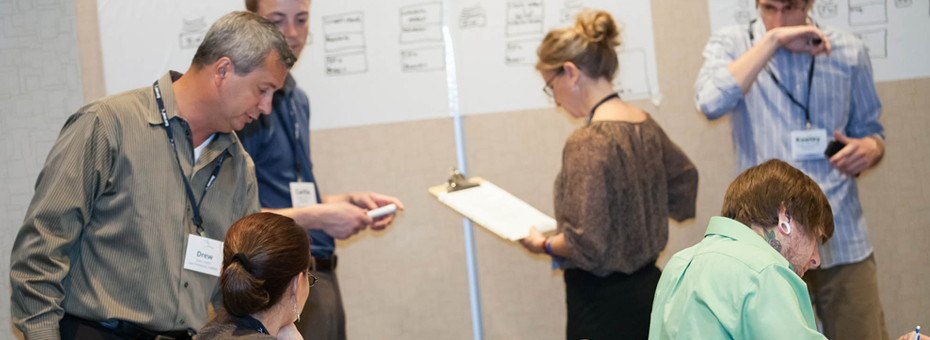There are few leaders with more responsibility, and often more frustration, than lean continuous improvement coordinators and facilitators.
As we point out in workshops, when change leaders start sharing some of their challenges, their companies have placed an incredible amount of faith in them and their CI teams. (These teams typically consist of one, maybe three, sometimes five, but very rarely any more than 10 members). And they’re expected to “transform” an organization with 500, 1,000, 5,000, 10,000 or more people!
On a day-to-day level, what most CI leaders want from management is more active participation in CI events and more consistent support for work on CI projects. And when their managers and executives are involved, they would like for them to act less like traditional managers and to think and behave more like CI leaders. It’s only human nature, of course, to think things would be better if certain people would do what we want them to do. But as anyone who has ever expected someone else to change knows, asking others to change, and complaining when they don’t, doesn’t work. The only person we can ever really change is ourselves. And even that is far from an easy task!
That’s not to say that line managers and business executives—particularly those who have been promoted and rewarded in a traditional management environment based largely on their problem-solving success—cannot change their default leadership responses. They can shift away from giving top-down commands and solutions to a more engaging and collaborative way of addressing problems that both gets results and develops people.
The behaviors and perspectives of traditional management are deeply ingrained habits and assumptions that cannot be turned off and replaced by throwing a switch. We suggest, based on our experiences, that traditional managers and executives focus on and practice three behaviors to help them personally make the transition.
1. Grasp the actual conditions of problem situations.
Don’t jump to solutions or accept when others go straight from problem recognition to solution. Grasp the actual conditions of problem situations firsthand whenever possible and insist that others clearly describe the problems they are trying to solve. Rather than assume you know enough about the nature of a problem situation, go to the gemba (wherever the work processes are) and try to understand the sources of performance problems yourself. Look for and ask about the problems, often caused by variation in the way the work is being done. Look for bottlenecks and rework that prevent the work from flowing from start to finish. And when you are at the workplace, engage those who work in the process to learn what they know about what is actually happening. Ask them for ideas for what needs to be done.
2. Show respect for what your employees know, think, feel and can do.
If you do not allow employees to share their observations and ideas with you as though you were a peer, you will not be able to fully grasp the problem situation and you may never know things you need to know. Connect with people one-on-one at the level of their personal interests and concerns. Practice Humble Inquiry to learn about the problems they encounter in trying to do their jobs. Ask questions that don’t assume you already know the answers or that seek specific responses. Recognize that employees will often give you the answers they think you want unless you show them you genuinely believe they have insights and the ability to solve the problem.
3. Pay attention to how employees talk to you (and each other) about problems.
Do your employees seem hesitant to speak frankly about the what, when, where, and who of problems? Do they “polish” their problem and project reports and gloss over details to avoid criticism or blame? If so, teach employees to compare standard or plan to actual and talk about why there are differences. Push people to reflect on what they know about why those differences exist. And make it safe for employees to self-reflect and consider how what they did or did not do might have influenced their results. This is best taught by modeling this behavior yourself.
These behaviors will go a long way toward creating a management environment that can grow into a problem-solving culture. The following signs will indicate that your transformation is contributing to a transformation in organizational culture:
- Problems are resolved the first time and do not recur as often because actions taken to address them are based on a better understanding of actual operating conditions, where and how problems at the process level are affecting performance.
- There is more self-initiated problem solving by employees because they feel they are not only allowed but expected to respond to problems within the scope of their jobs. Moreover, they feel respected for their knowledge and capability in doing so.
- An atmosphere of trust and safety exists in which problems can be exposed and countermeasures tried as experiments without concern for the consequences of speaking up or failing the first time.
There’s a reason why we refer to shifting to the leadership behavior described above as a “transition” and not a “transformation.” Absent a moment of blinding revelation on the road to Damascus, it takes time to unfreeze old habit or behavior, try out new patterns, practice them, and make them your default responses as a leader.
Managing to Learn with the A3 Process
Learn how to solve problems and develop problem solvers.








Problem solving and leadership are very important in our society also they needed to be learned so that it will give a positive impact to the society